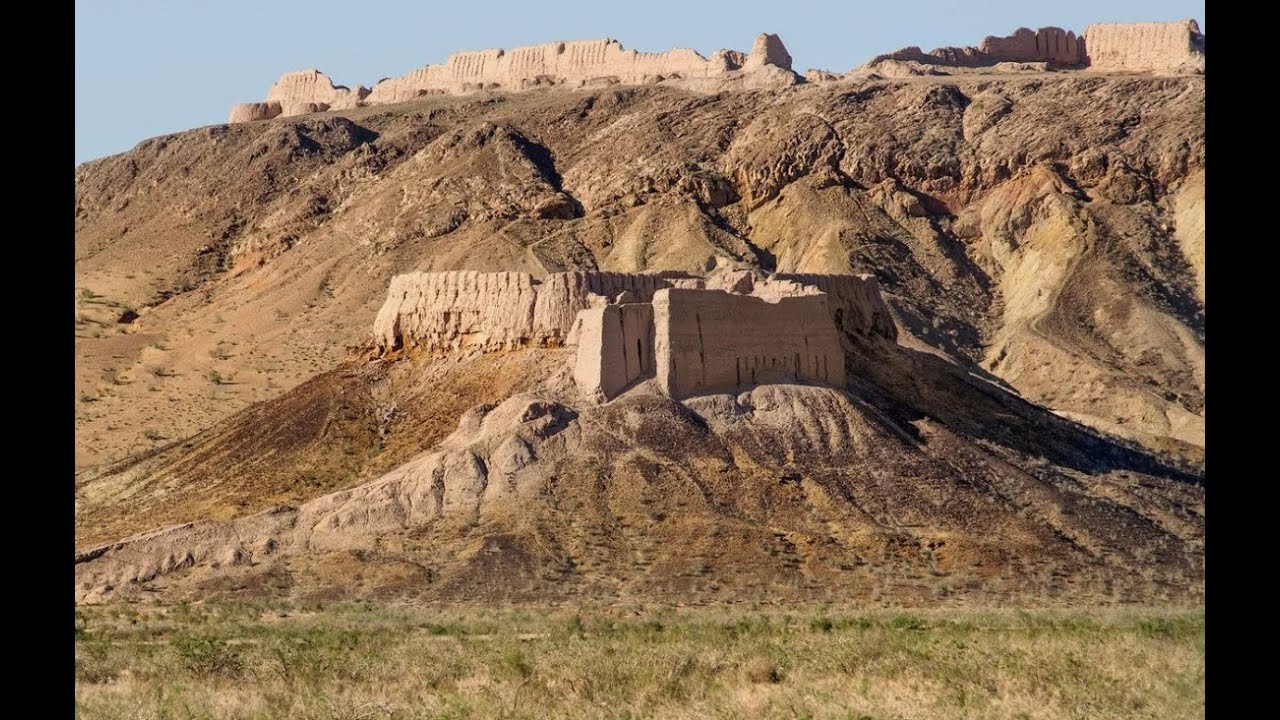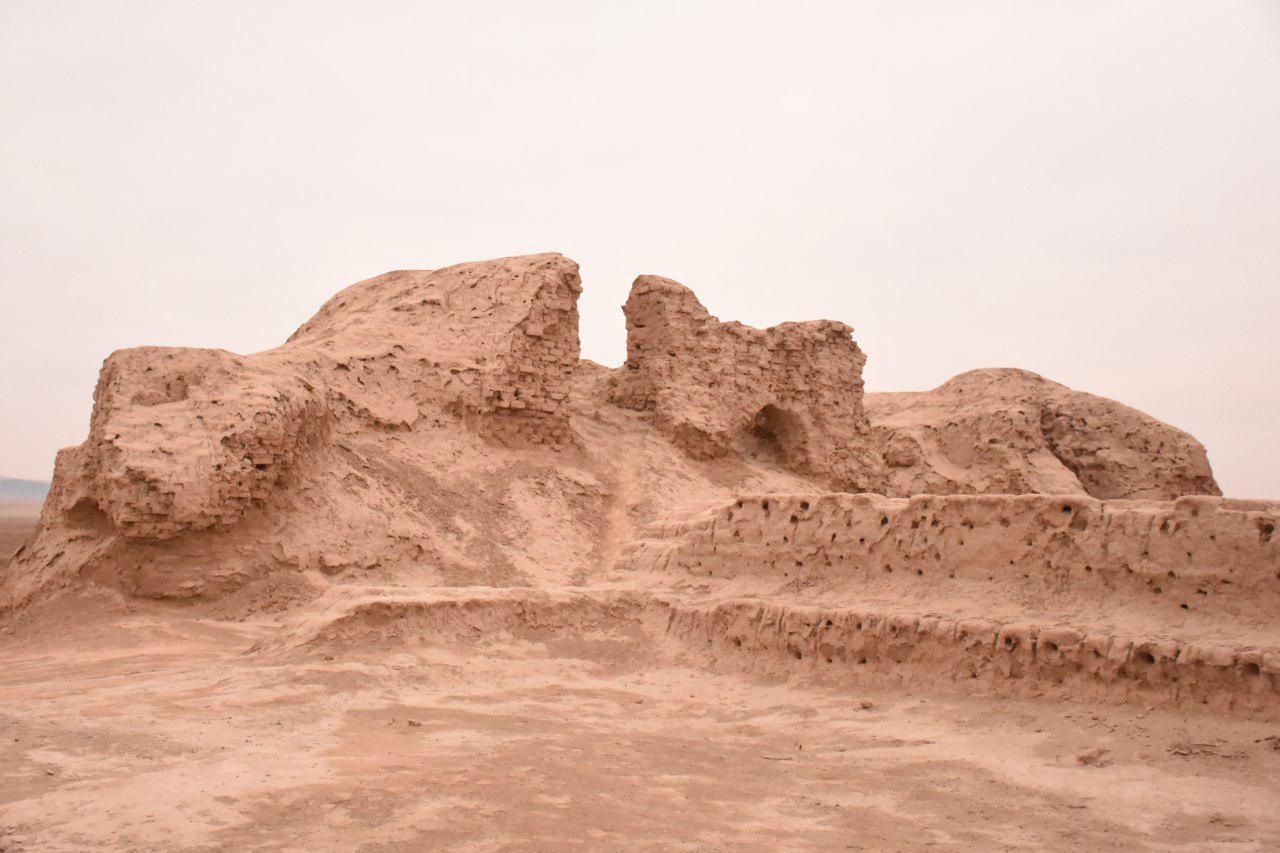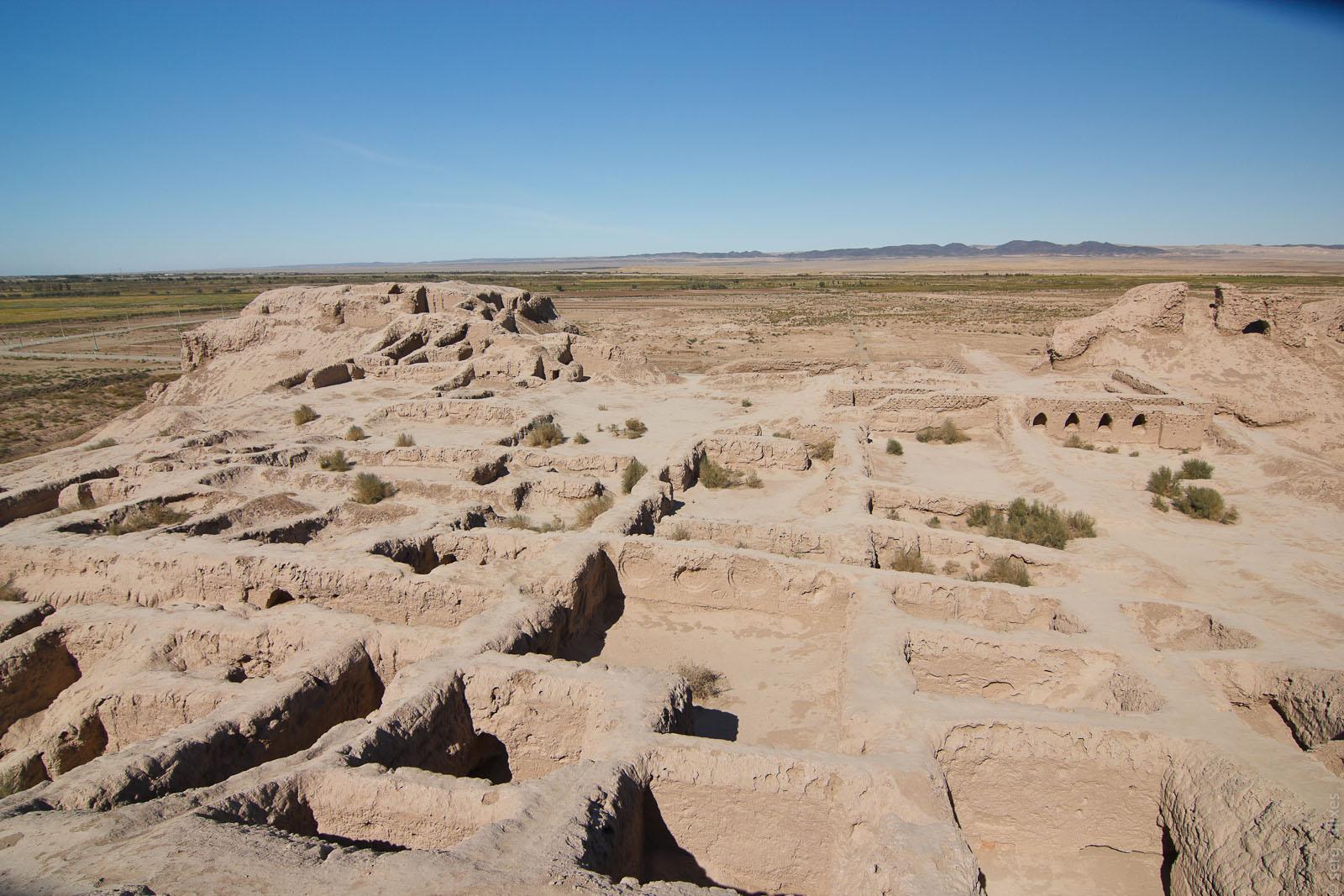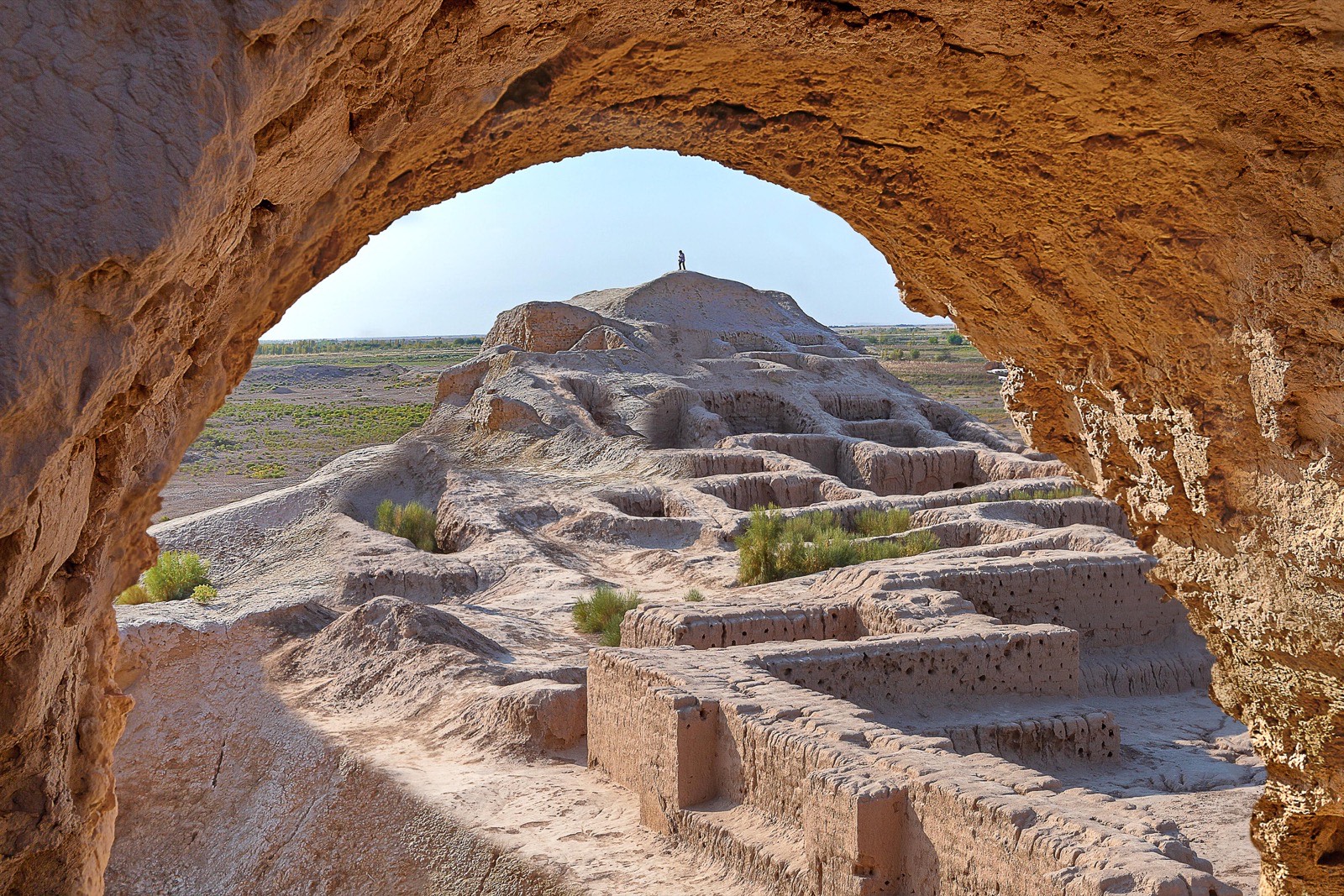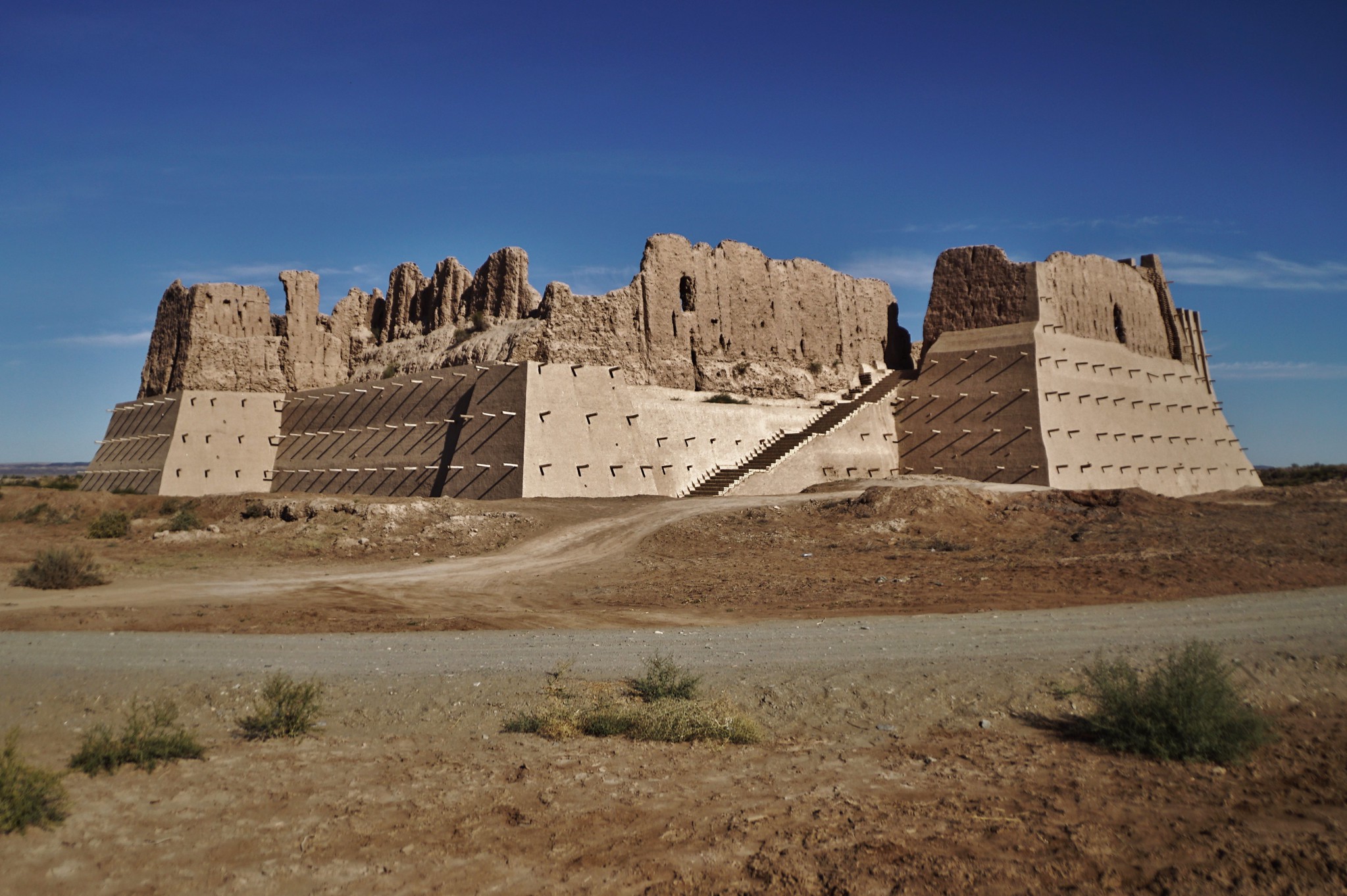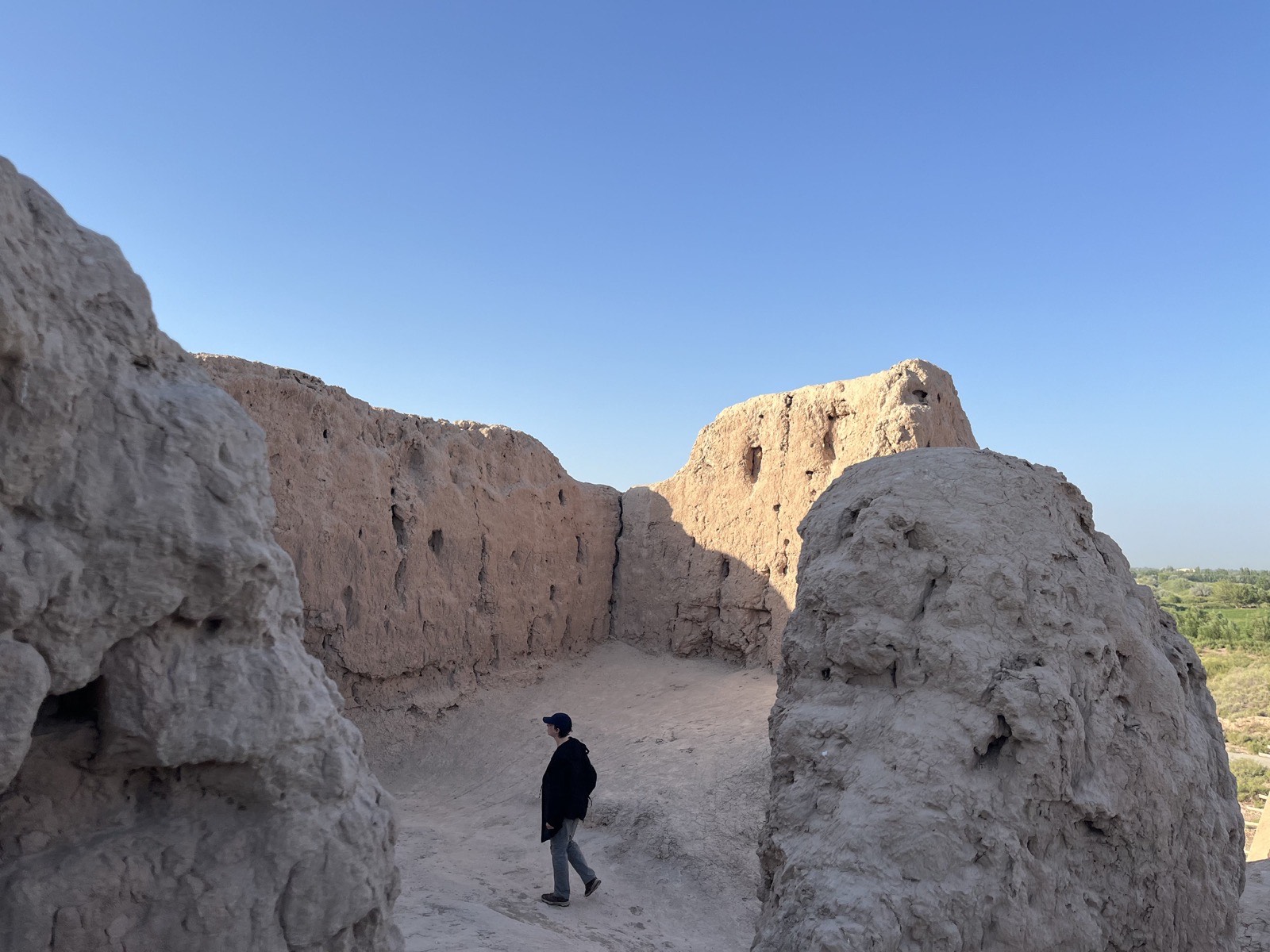Ayazkala Fortress
Perched above the Kyzylkum Desert, Ayazkala’s three fortresses guarded the Khorezm frontier from the 4th century BC to the 7th century AD. Double walls, labyrinthine entrances and two-storied galleries speak of an advanced Zoroastrian society prepared for nomadic raids.
Ayaz-Kala Settlement-1, the “Fortress downwind”, retains 10-metre-high ramparts, archer galleries and a protected southern gate. Settlement-2 later evolved into a palace complex with Afrigid coins, painted halls and a fire temple. Settlement-3 reveals a massive parallelogram fort with double walls and a maze-like entrance.
If you journey into the desert, plan to stay overnight at the nearby yurt camp for a glimpse into nomadic life under the stars.

